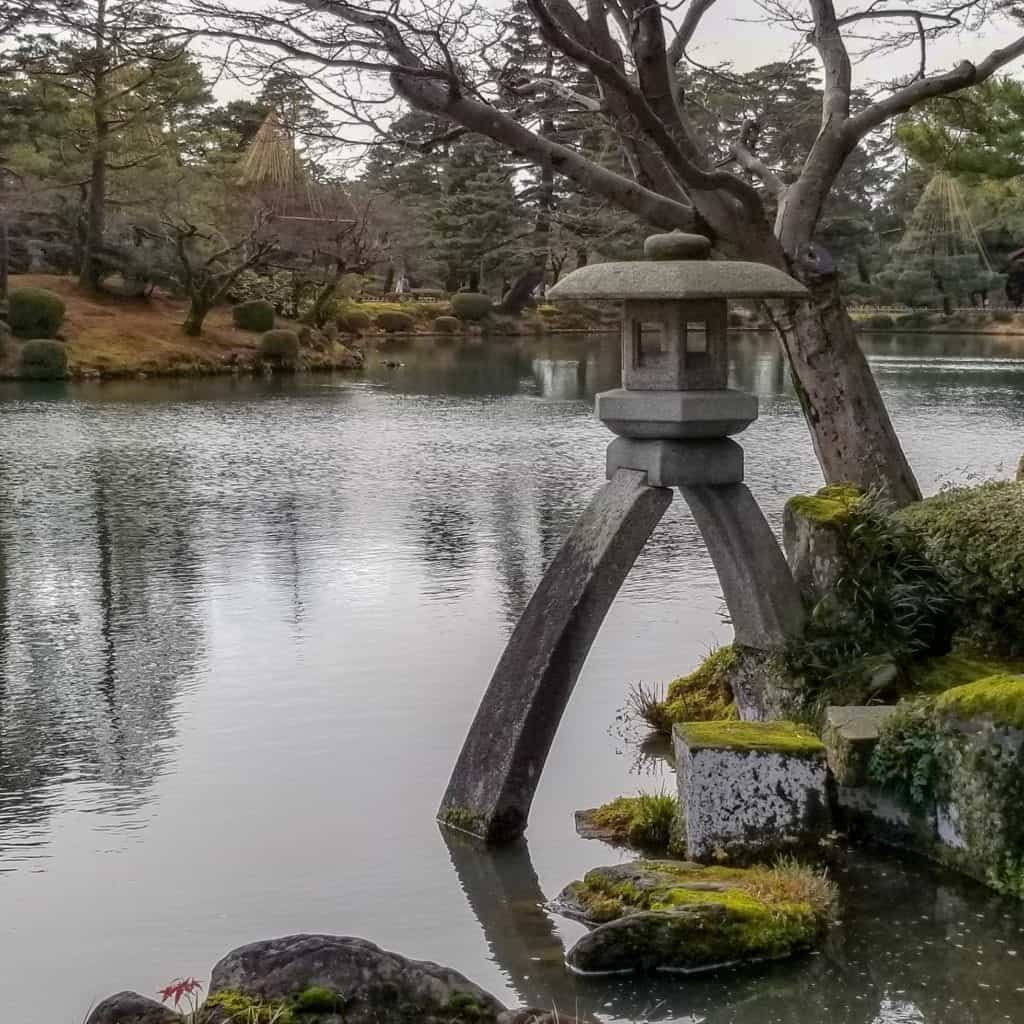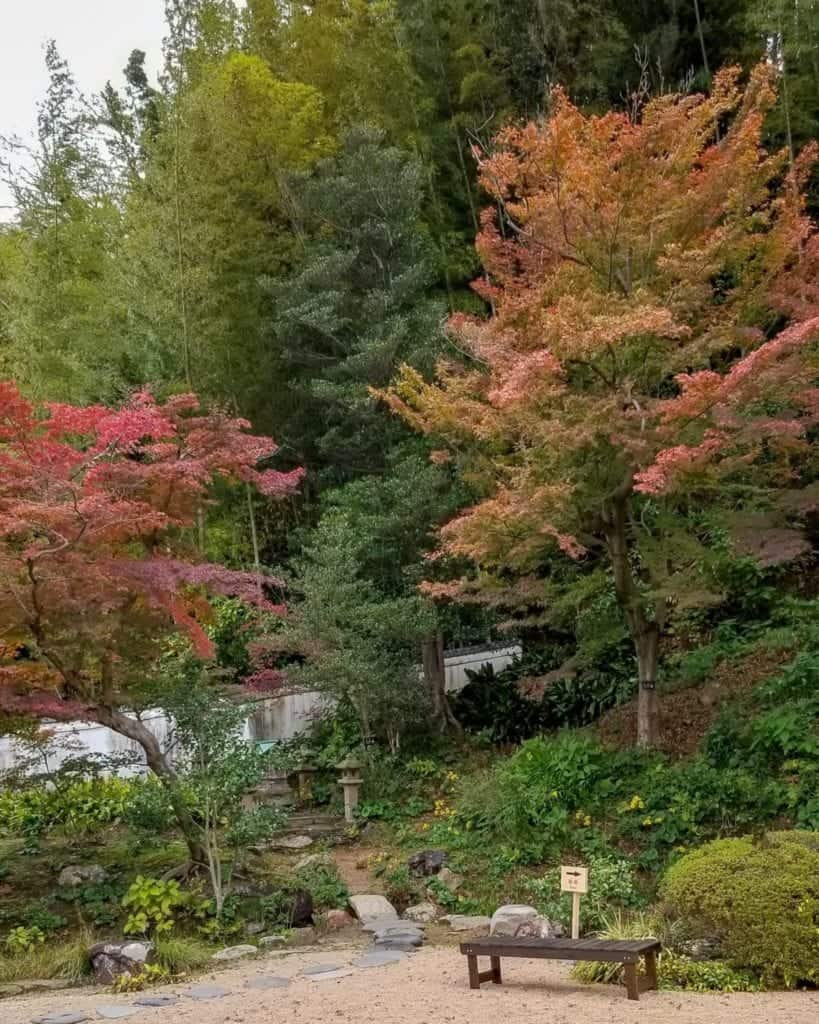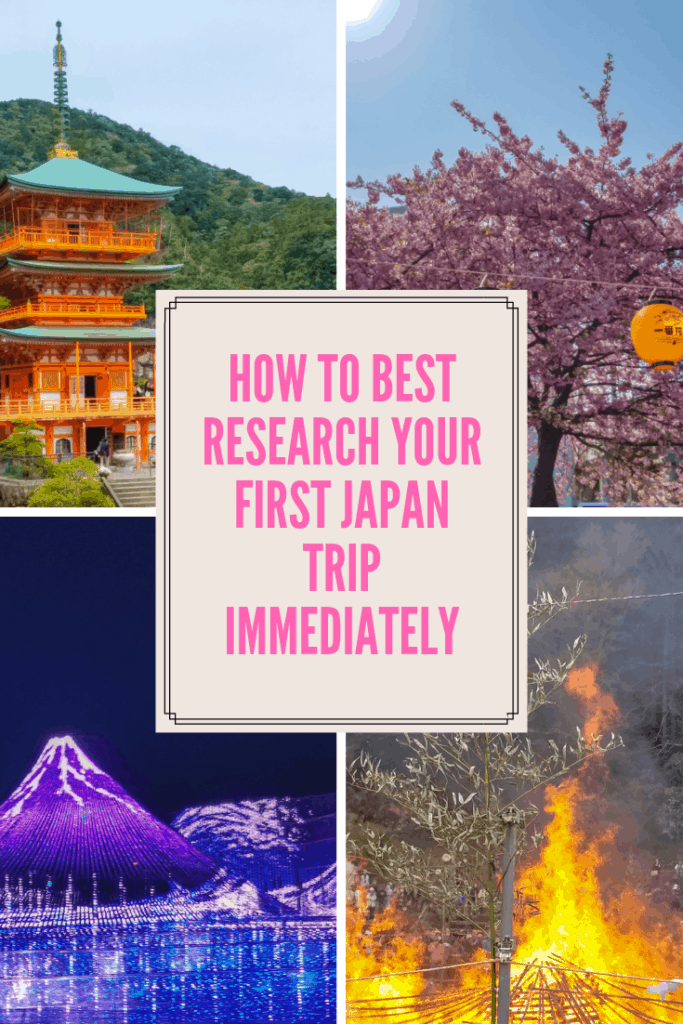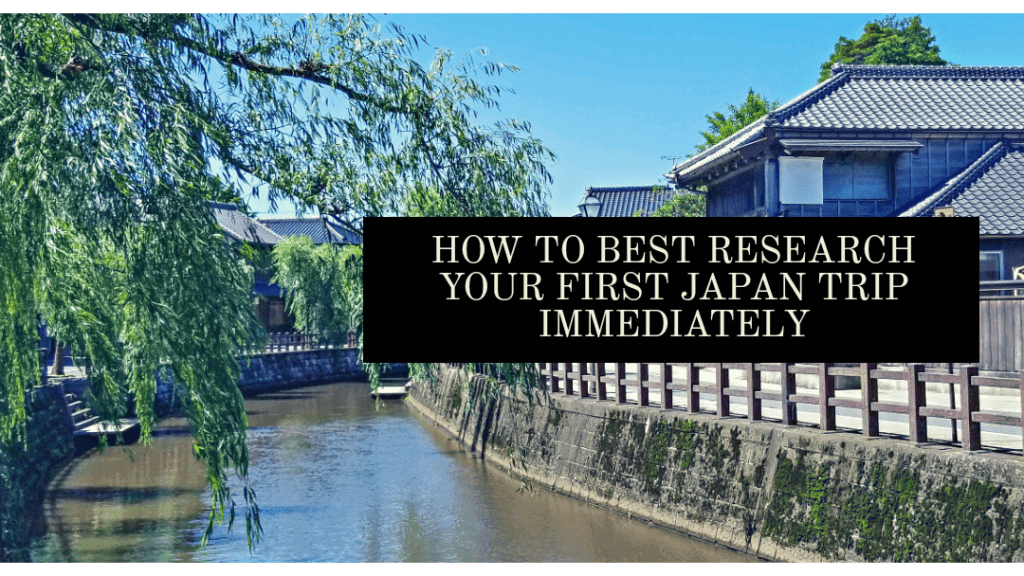You’ve decided you want to go to Japan, AWESOME! If you’ve missed it, I’m kind of a big proponent of this beautiful country. Researching and planning your trip to Japan can be a daunting experience though. Where do you start? Whom do you trust? With six years of experience and nearly all of the prefectures under my belt, let me put you on your course.
Understand the Geography: The Four Main Islands of Japan
While the Japanese archipelago (日本列島, Nihon Rettō) consists of well over 6,000 (!) islands, we tend to think of it as four main islands, Hokkaido, Honshu, Shikoku, and Kyushu, plus Okinawa. The former being “main land” Japan and the latter being part of Ryukyu Islands, a long chain south of Kyushu. Fun fact, Okinawa was its own nation for a very long time and explains their language differences.
Japan, though slightly smaller than California land mass wise, the land of the rising sun stretches in an arc about 2,900km (1,800 miles). With over 70% mountainous terrain, it’s a very dense 127 Million people (American has about 200 million more than that, for reference). Honshu, home of Tokyo, Kyoto and Osaka (what I love to call the “circuit” of mainstream Japan itineraries), being most dense of all.
You don’t need to worry about flying between the mainland islands – they are all connected by tunnels or bridges! Adding to the convenience factor for the train system.

Know your Geography: The 47 Prefectures
Fun fact: There are 43 prefecture proper (県, ken), two “urban” prefectures (府, fu, Osaka and Kyoto fall under this), and then one “metropolis” prefecture…bet you can’t guess which. I kid, I kid. Tokyo is 都, pronounced “tow”, not “to”. Oh, and Hokkaido is
The prefectures are further broken into regions, though they aren’t governmental, more so historic. A good way to start your plan for your trip to Japan is to narrow down which region you would like to see.
Hokkaido (北海道)

Hokkaido
Literally, the “North Sea District” though “District” could also be taken as “journey” (and that makes it sound more whimsical!), this island is the second largest in the Japanese archipelago and was originally inhabited by the Ainu.
Hokkaido features only one prefecture of the same name, making it the largest prefecture in Japan. It is also the least population-dense, with the capital of Sapporo the most happening place. Big cities
Well known for its natural beauty, Hokkaido is where you want to be if you are an outdoor enthusiast. World-renowned skiing in winter and plenty of hiking and white-water rafting once the snow melts. In winter it boasts many annual snow festivals to dazzle you.
Tohoku Region (東北地方)

Tohoku
Because we are very original with names in Japanese, Tohoku merely means “northeast”. Which is where it is located on the largest island of Japan, Honshu. It makes up six of the 47 prefectures, each with a bit of their own character partially due to the harsher climates of the region.
Sadly, probably most recognized as the location of the 2011 Earthquake, it is full of lakes, mountains (with some great skiing spots). Famous for several hot spring or onsen (温泉) areas, it also has some great castles (including Hirosaki, one of the 12 originals) and samurai residences.
Don’t forget some very memorable summer festivals as well! Each of the six prefectures is known for their own.
Prefectures of Tohoku
- Aomori
- Iwate
- Miyagi
- Akita
- Yamagata
- Fukushima
Kanto Region (関東地方)

Kanto
Kanto (関東) can be translated to the “east of the gateway” and is the most extensive lowland of Japan which makes it also one of the most productive. Fun aside – the katakana-ized version is a region in Pokémon.
With Tokyo dead smack in the middle, the Kanto plain is the most populated and developed region of Japan with seven of the 47 prefectures. Nearly a third of the population lives here. There are plenty of cities besides Tokyo to keep any city lover occupied on a trip to Japan as well as having some more remote areas to get away from it all including UNESCO World Heritage Site, Nikko.
Prefectures of Kanto
- Ibaraki
- Tochigi
- Gunma
- Saitama
- Chiba
- Tokyo
- Kanagawa
Chubu Region (中部地方)

Chubu
Again, we’re naming things very directly. Chubu (中部) means “central part” and its nine prefectures are smack in the middle of the Kanto and Kansai regions on the island of Honshu. Due to its diversity, it’s sometimes further broken into three:
- Hokuriku region (北陸地方, “The north land”), the northwestern side which includes Kanazawa
- Koshin’etsu region (甲信越地方) which is a blended name of the three old provinces that it consisted of: Kai (modern day Yamanashi), Shinano (modern day Nagano) and Echigo (modern day Niigata).
- Tokai region (東海地方) which means “east sea region” and consist of those touching the sea
Probably most famous for Japan’s tallest mountain, Mount Fuji, and the Japanese Alps but it also includes many major cities, including Japan’s fourth-largest, Nagoya. Don’t forget one of Japan’s National Treasures, Matsumoto Castle.
Prefectures of Chubu
- Niigata
- Toyama
- Ishikawa
- Fukui
- Yamanashi
- Nagano
- Gifu
- Shizuoka
- Aichi
Kansai (関西地方) or Kinki Region (近畿地方)

Kansai
I honestly didn’t realize it had two names until I was researching this post. Kinki (yes, pronounced like “kinky” and therefore part of the reason for the change) is directly linked to the areas around Kyoto whereas Kansai refers to the area “west of the gateway”. Gateway sounds better than “toll gate”, which is what it was. It’s still known governmentally as Kinki but tourism wise for those planning their first trip to Japan, it’s Kansai!
Located in the southern-central region of the island of Honshu, it is second-most populous after Kanto and includes seven prefectures. Home to not one, but two of Japan’s ancient capitals, Kyoto and Nara, the region is the best- known overseas (in my humble opinion) and is not lost in the number of tourists you will encounter.
You want culture and history? Come here.
Prefectures of Kansai
- Mie
- Shiga
- Kyoto
- Osaka
- Hyogo
- Nara
- Wakayama
Chugoku Region (中国地方)

Chugoku
Chugoku (中国) in this case translates as “central country” but it also, by itself, means “China” which as much as I tried, no one knows where the regions name comes from. The westernmost region of Honshu island, it includes five prefectures.
Probably most recognized from the atomic bomb dropping in 1945 of Hiroshima, there are many things in the area to keep busy with including
Prefectures of Chugoku
Shikoku Region (四国地方)

Shikoku
The smallest of the main land islands, Shikoku has gone by many names over the year. Literally translated as “four countries”, it refers to the four former regions: Awa, Tosa, Sanuki, and Iyo. It, to this day, still has four prefectures.
If volcanos aren’t your thing, this is the only of the main islands that doesn’t have one! There are still many famous onsen though from deep underground sources, including Dogo which is supposedly one of the country’s oldest.
With the island famous for the 88 Buddhist Temple Pilgrimage, you can spend a long time in this little place. It is also home to four of the 12 original castles: Kochi Castle, Matsuyama (my absolute favorite), Marugame and Uwajima. If mili
Prefectures of Shikoku
- Tokushima
- Kagawa
- Ehime
- Kochi
Kyushu Region (九州地方) including Okinawa (沖縄)

Kyushu & Okinawa
Kyushu translates to “Nine Provinces” and is named such due to the Saikaido (西海道, “western sea circuit”) which means both division of country and the road running through it. An ancient term from the Asuka period nearly 1500 years ago.
Kyushu today consists of seven prefectures (and we tack on Okinawa for the 8th in the region) and is the third largest island in Japan. Being super close to Korea, you can actually hop a high-speed ferry over!
There are plenty of volcanoes, onsen, forests and green mountains to keep you busy, much of the island isn’t developed.
Prefectures of Kyushu
- Fukuoka
- Saga
- Nagasaki
- Kumamoto
- Ōita
- Miyazaki
- Kagoshima
- Okinawa
Know what the Weather is like for your trip to Japan
Growing up in DC, I’ve always likened Japan’s climate to the East Coast of the United States, explaining the diversity across the different regions.
Drop the “main land” down on top of the east coast and it stretches from about Portland, ME (near similar to Asahikawa’s latitude – the furthest North I’ve been in Japan) to south of Savanna, GA (Kagoshima being the largest city at the bottom of Kyushu). Tokyo would be somewhere in North Carolina.
With four distinct seasons across the mainland, the only thing you’ll have to consider is where you are going in your final decision.
Japan in spring
Spring months see moderate temperatures. Coming in spring? Most importantly, you’ll want to time your location with Japan’s famous cherry blossoms. The Japan Meteorological Corporation (JMC) puts out a cherry blossom forecast every year around February but you can expect southern regions to begin in March and Northern in May.
Summer in Japan
Summer, thanks to the lovely humidity can be HOT in Japan in July and August. June brings the rainy season, but you can definitely make due even in the rain! Typhoon season, though on paper from June to November, normally gets going in July. Summer is a great time to see some traditional festivals like Yosakoi and Obon.
Japan in autumn
Bring on the fall leaves! Typhoons tend to show up till October (don’t let that scare you, its more like tons of rain and some wind, we have windier days in winter half the time!). For leaf viewing, which is called 紅葉狩り (

Winter in Japan
If you are a winter sports fanatic like me, this is the time to come to Japan! Thanks to the geography of how Japan sits on the world, she sees heavy snowfalls in the mountainous regions and gets amazing powder, especially up north in Hokkaido. The rest of the country doesn’t see as much snow but nice cool weather will abound.
Utilize Tourist Information Centers 観光案内所 during your trip to Japan
There are more than 1,000 certified Tourist Information Centers 観光案内所 (kanko-annai-jo) throughout Japan. “Certified”, you ask? The Japan National Tourism Organization (JNTO) and the Japan Tourism Agency began a Tourist Information Center (TIC) Certification Program in 2012 to ensure the quality of the information being presented. A quick stop in will serve you wonders.
Most often located in or directly near train stations, Japan’s tourist info centers are great resources on local attractions. They usually have maps available and at times, there won’t be info in English, but the staff can help you find your way. Usually, there are different language material broken into sections.
This is my go-to. Something I’ve found over the years in Japan, the Japan tourism information centers are amazing. They have all sorts of local travel guides for you to sort through. This isn’t the silly brochures you see at a Denny’s or your hotel back in the states or elsewhere, they are full-fledged pamp
I tend to play pin the tail on the map and just go with the flow when I’m traveling. You don’t have to wait until you arrive. No “ok, I’m here, where to go?!”. Most
Best though? Stop by and talk with the locals. Researching ahead of time can be tedious and you a lot of times only get the “popular stuff”.
Things I wouldn’t have found without Japan tourism information centers:
- the Apple Farm in Hirosaki
- the
nebuta museum in Goshogawara - how to get to Japan’s “#3” waterfall from Nikko
- bus routes in general
- Local cuisines to look out for (this is a BIG one, have you checked out my food account on Instagram?)
- the list goes on and on
Wondering if your city of choice will have information available upon arrival? JNTO has all of the TIC locations in a database. There are three levels of categories, dependent on how much area the center covers, what languages are spoken, days of operation and if Internet PC/Wi-Fi is available.
Each entry will link you to their official website which sometimes will have information packets you can print out beforehand!
Drop the “所” or “jyo” (literally, “place”) off the end and you get “Tourist Information”. The pieces of which can be roughly looked at, literally, as “outlook to a light of a plan inside”. I kind of like that, it’s like a “glimmer of hope” to find all the cool things!
Read Japan Travel Blogs!
I hope you find my site useful, as of writing this, I have over 100 articles JUST on Japan, and I’m barely scratching the surface! However, let’s face it, there are a million travel websites out there.
This is exactly why your search terms should include “JAPAN” in them. Lot’s of people have travelled to Japan, but getting your information from those that have lived here or travelled extensively has a lot more clout to me. A few of my favorites (besides my own, of course!):
Zooming Japan
Literally what I aspire my page to be. (And my travels to consist of). Jasmine has been living in Japan for over 7 years, been to all 47 prefectures and over 100 castles (completely up my alley).
Tokyo Desu
Fun fact about this, Cal and Mike are my friends IRL and I didn’t know they had this site until I found it on my own. They’ve got some great quips and a few guides to check out.
Donny Kimball
I found Donny’s website thanks to Instagram and he’s reason for more than a few of my Japan travel destinations. More off the beaten path, which is exactly what I love.
Buy a few Japan Guide Books
Sometimes you can’t beat a physical book. Highlight it, put tabs, be able to flip real fast without having to think, “what site was that on again?”. If it’s got a map, even better. Just in case you lose your internet connection. Most are tailored to overarching broad strokes of Japan or your popular destinations such as Tokyo or Kyoto. HOWEVER, if you can read Japanese (start with my guide to hiragana and katakana), there are literally travel books on every single thing you could possibly think of. Amazon.co.jp is your friend.
Disclosure: Kristenabroad.com is a participant in the Amazon Services LLC Associates Program and other affiliate programs. For some links to products or services in this article, I may earn a small commission by you using my link. The price for you is not affected.
For those English readers, a few of my favorites are here. I like having the personal touch but also you can’t go wrong with Lonely Planet.
Narrowing down your trip to Japan
With areas like Kyoto being overcrowded with tourists, I hope this article helps you realize that there are many other impressive places to see for you first ( or next!) Japan trip! Why not get off the beaten path and head to the lesser
Budget traveler? The best part with the Japan rail pass, you can get regional passes for much cheaper than the “all-access” pass that seems to be everyone’s go-to. Train travel truly is the best way to get around Japan.
Don’t forget, there are airports all over Japan so you have many options for your entry point! If it ends up making your long haul flight a little longer, consider it might save you time in the long run and I’ve got you covered with survival tips.
Where will you research take you?
Pin this for later

